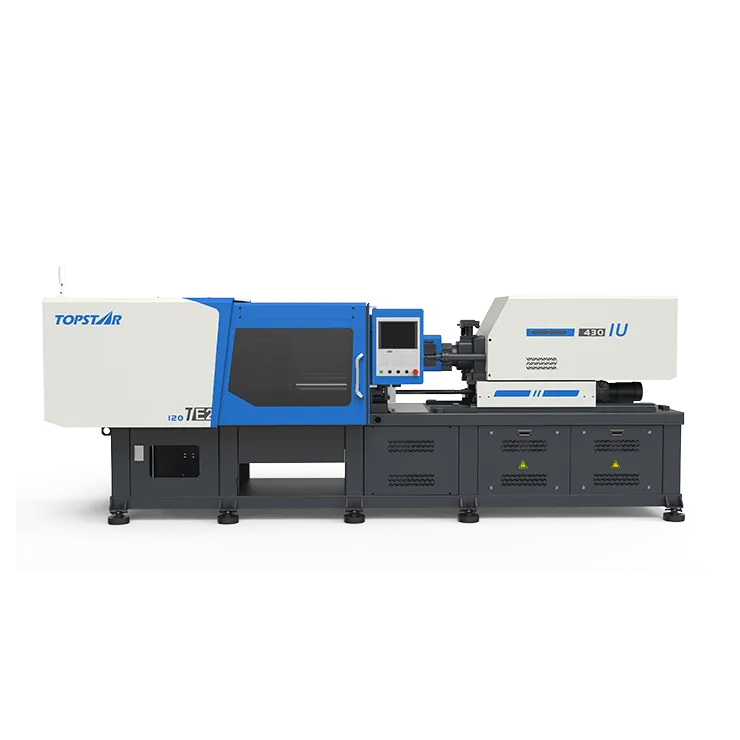How to manage heat dissipation in all electric injection molding machine?
All electric injection molding machines represent high precision, accuracy, and efficiency. However, like any high-performance machinery, their motors generate heat during operation, which may affect their performance and service life if not managed effectively. Therefore, proper heat dissipation is essential to maintain the efficiency and reliability of these machines. This blog post provides an in-depth guide on managing all electric injection molding machine heat dissipation, providing users with tips for optimal operation and use.
Heat generation of all electric injection molding machine
Heat generation is an inherent part of the operation of all electric injection molding machine. These machines rely on servo motors, heaters, and control systems to melt plastic and inject it precisely into the mold. The movement of the servo motors, the energy transfer during the plasticization process, and the heat generated by the heaters generate a lot of heat energy.
Poor heat management can lead to various problems, including overheating, reduced machine accuracy, and even component failure. Over time, this can lead to increased downtime, maintenance costs, and reduced productivity. In addition, overheating can cause mold deformation, resulting in inconsistent final products, by implementing a strategy to manage heat dissipation effectively. You can focus on mitigating heat-related issues and ensuring smooth machine operation by identifying key areas where heat builds up, such as servo motors, electrical cabinets, and heating zones.
Implementing a Cooling System for an All Electric Injection Molding Machine
A cooling system is one of the most effective ways to manage heat dissipation in an all electric injection molding machine. These systems transfer heat away from key components, ensuring the machine operates within an optimal temperature range. Standard cooling methods include advanced technologies such as air, water, and liquid-cooled heat exchangers.
Air cooling is a simple, cost-effective method that uses fans to circulate air around machine components. While air cooling is suitable for low to moderate heat loads, it may not be enough for high-performance machines running at maximum capacity. Water cooling, on the other hand, is more efficient and capable of handling higher heat loads. By circulating water in cooling channels near the machine’s heat-generating components, heat is absorbed and carried away, ensuring consistent thermal management. This approach benefits injection molding machines operating in high-temperature environments or for long periods.
Temperature Monitoring for All Electric Injection Molding Machine
Accurate temperature monitoring and control are essential for effective heat dissipation in all-electric injection molding machines. Topstar’s all electric injection molding machines have temperature sensors and control systems that continuously monitor the machine’s heat levels in real-time.
These sensors are placed near heat-generating components, such as servo motors, electrical systems, and heaters. By providing instant feedback to the machine’s control system, these sensors can automatically adjust the cooling system to ensure that temperatures remain within the desired range. In addition, they feature an integrated thermal management system that allows operators to set specific temperature thresholds. When temperatures approach these limits, the machine can automatically initiate additional cooling measures or reduce operating intensity to prevent overheating.
Heat Dissipation Design
In the design of Topstar’s all electric injection molding machines, we incorporate thermal management principles into the design process to ensure optimal heat dissipation. The layout of the machine’s components can significantly affect its ability to dissipate heat. Keeping heat-sensitive components away from heat-generating components or integrating heat shields can help prevent heat transfer between components. Similarly, using materials with high thermal conductivity, such as aluminum or copper, can enhance the machine’s ability to dissipate heat quickly. Ventilation is another important design consideration. They have adequate ventilation systems to promote airflow and prevent heat buildup in enclosed spaces. Including ventilation grilles, fans, and cooling ducts helps maintain a consistent temperature throughout the machine.
Maintenance Practices for Managing Heat
Regular maintenance ensures that all electric injection molding machines effectively dissipate heat. Over time, dust, debris, and wear can reduce the cooling system’s efficiency, causing heat to build up and potentially damaging the machine. Fans, cooling channels, and heat exchangers should be cleaned regularly to remove dust and debris that may impede air or water flow. Meanwhile, temperature sensors should be checked to ensure they function correctly and provide accurate readings. Maintaining proper coolant levels is essential for effective heat transfer for water- or liquid-cooled systems. Additionally, overheating can damage electrical systems, so you should regularly inspect them to identify signs of wear or damage.
Optimizing Heat Dissipation for Performance
Managing the heat dissipation of all electric injection molding machines is essential to ensure their efficiency, reliability, and longevity. By understanding the sources of heat, implementing an effective cooling system, and utilizing advanced monitoring technologies, manufacturers can maintain optimal thermal conditions for their machines. How to manage heat dissipation in all electric injection molding machine?











Post Comment